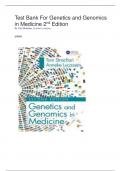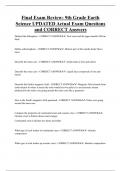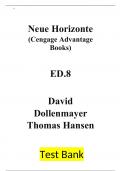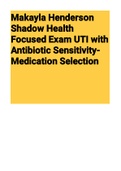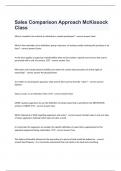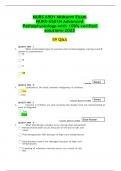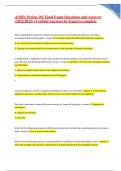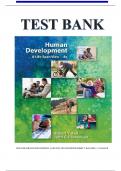Exam (elaborations)
Test Bank For Genetics and Genomics in Medicine 2nd Edition By Tom Strachan, Anneke Lucassen
- Course
- Institution
Chapter 5. Single-gene Disorders: Inheritance Patterns, Phenotype Variability, and Allele Frequencies 1. What is the inheritance pattern of Huntington's disease? A. Autosomal recessive B. X-linked recessive C. Autosomal dominant D. Mitochondrial inheritance Answer: C Rationale: Huntington�...
[Show more]
